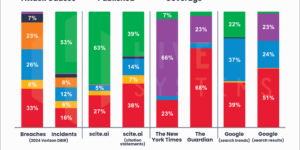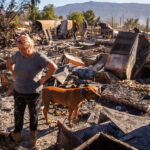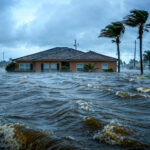U.S. studies of oil train dangers may have underestimated the perils of volatile vapor on the tracks and officials will in future use precision instruments for more thorough tests, a Transportation Department official said on Tuesday.
Officials have warned since January that flammable gas might be wrongly moving with crude oil from North Dakota’s Bakken region but government studies have largely agreed with industry-funded reports that such fuel is fit to move in standard tank cars.
But past studies were incomplete and future fuel samples will be drawn using what is known as a syringe cylinder that better detects flammable gas, said Timothy Butters of the Transportation Department’s Pipeline and Hazardous Materials Safety Administration (PHMSA).
“PHMSA has purchased nine closed syringe-style cylinders and is collecting and sampling using these cylinders,” Butters told a panel of the U.S. House Committee on Science, Space and Technology.
The volatility of Bakken fuel has become a major concern as officials consider an oil train safety plan that will likely require such cargo move in toughened tank cars and at slower speeds.
If the authorities determine that Bakken fuel is more gas-packed and volatile than other fuel, they might insist that the cargo moves in bulkier tank cars or undergo costly processing.
Industry officials say, however, that under any testing protocol, the vapor pressure of Bakken fuel is within the range of other light crude oil.
“It’s a red herring,” John Auers, executive vice president of Turner, Mason & Company consulting engineers said of the call to use syringe cylinders.
“Our experience with that device is that the results are not that different and its certainly more complex to operate.”
In a May report on Bakken fuel that Auers helped supervise, pressure results did not exceed 15 pounds per square inch (psi).
The threshold pressure for flammable gas is about 43 psi under those same conditions.
“We are open to more scrutiny but we also have a lot of confidence that our fuel is moving safely,” said Kari Cutting of the North Dakota Petroleum Council.
Several doomed oil trains originated from the Bakken region in the last 14 months, including a shipment that destroyed the village of Lac-Megantic, Quebec, killing 47 people in July 2013.
And while PHMSA has collected roughly 80 fuel specimens since it began studying the dangers of Bakken crude after the Lac-Megantic disaster, most were taken at atmospheric conditions, a method that oil quality experts say can miss vapor pressure dangers.
ASTM, an international standard-setting body, in May deemed the syringe cylinder precision instrument the right tool to detect vapor pressure in volatile crude oil.
The Canadian Crude Quality Technical Association, a trade group which is helping the Canadian government adopt such a test, agrees.
“This is a step in the right direction,” Andre Lemieux, secretary of the CCQTA, said of the PHMSA commitment to future testing.
Word Count: 495




















 Slideshow: Carrier Management’s 2024 Top Editor’s Picks (Unlocked)
Slideshow: Carrier Management’s 2024 Top Editor’s Picks (Unlocked)  Wildfire Smoke’s Health Risks Linger Long After Homes Escape Burning
Wildfire Smoke’s Health Risks Linger Long After Homes Escape Burning  Insurance Carrier Employees Are Bored; Most Boring Rankings Published
Insurance Carrier Employees Are Bored; Most Boring Rankings Published  National Flood Insurance Program Authorized to Continue Through Mid-March
National Flood Insurance Program Authorized to Continue Through Mid-March 








